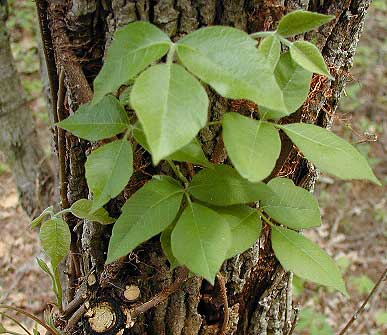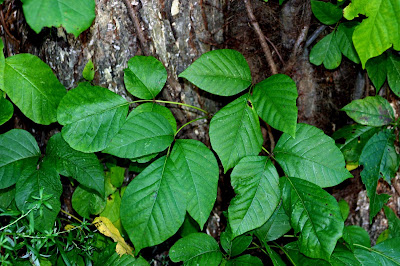
Identifying Poison Ivy, Poison Maple, and Poison Sumac is easy
The first thing to realize is that all three of these are extremely poisonous plants that can kill you if you come into contact with them or ingest any part of the plant. However, what makes them so dangerous is that they often grow in the same place and are often mistaken for each other because of their similar foliage.
Poison Ivy is a plant that grows in the United States. It has grayish green leaves and the stems tend to be shiny and stiff. They may also be brown with spots and it is not uncommon to find poison ivy growing on fences surrounding gardens. Most people do not recognize this plant until they have it on their counter top or in their garden and it makes them sick.
Poison ivy can kill by eating the roots or stems of the plant. If you have this plant and think you may have swallowed some of its toxic leaves, it is very important to contact a Poison Control Center immediately. The plant produces a small amount of a toxic substance that can easily enter the bloodstream. This makes poison ivy very dangerous because many people do not realize that they have been exposed to the plant, or do not know that the plant is poisonous, until they develop symptoms after ingesting some of the plant.
Poison ivy can also be fatal in contact with human skin. The poison it produces is highly toxic and can easily cause death if it comes into contact with the skin.
Poison ivy is commonly confused with poison oak and poison sumac. They are both very dangerous because they grow in the same places and are often mistaken for each other. Although poison ivy is poisonous, parts of the plant that are used to make the bark to create bark balls can be eaten, but the leaves should not be swallowed because they will be too poisonous.

Poison ivy can also cause diarrhea, abdominal pain, headaches, and vomiting. It can also cause severe rashes and a burning sensation that prevents you from scratching. All parts of the plant that are used to make bark can be fatal in contact with the skin. If a person comes into contact with any part of this plant, he should immediately contact a Poison Control Center. Poison ivy will kill almost anyone who comes into contact with it.
Poison ivy is commonly sold as a natural remedy for several diseases. Poison ivy can also be found in many foods that are labeled as natural and are used to treat a variety of health problems. Some companies sell it as a cough suppressant. There are also many over-the-counter medications that are said to treat asthma, depression, indigestion, and headache.
Poison ivy may cause death if it is ingested if it is swallowed or comes into contact with the skin. If a person is suffering from an allergy and they take an over the counter remedy for one of the symptoms that they have, it could be that the allergy was triggered by some contact with the plant. Some products may have traces of the plant in them and they may be dangerous to your health.
Poison Ivy should be destroyed immediately, because if it is left on the ground and becomes dry, it will turn into a powder form and be inhaled by the human body. The powder form can become airborne and wind up on your skin where it can cause irritation to your skin. Even small amounts of the plant can make you very sick. If a person were to have a severe allergic reaction to the plant, it would be fatal.
Poison Ivy is very easy to get from plants and should be eliminated from your home immediately. Many people think that the problem is easy to solve, but they were wrong. The problem isn't as easy as they think and it can take a lot of time and work before the problem can be solved completely. You must be persistent, because if you want to completely eliminate the problem.
If you have Poison Ivy in your home or in your yard, call poison control right away. They will advise you on what you can do to get rid of the plant. They will also help you determine the best way to get rid of it safely. The poison ivy plant can be removed from the area by burning or by washing the plant with hot water or bleach.